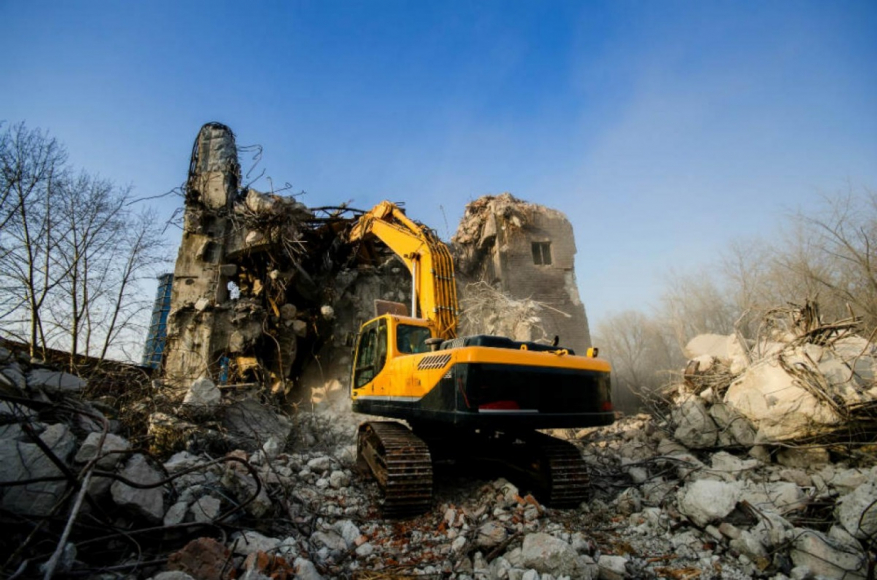There are a lot of "what ifs?" that come with decommissioning projects--but managing them doesn't have to be scary. Learn how to successfully manage your knowns and prepare for the unknown.
Decommissioning projects are full of what ifs, uncertainty, and risk. But what if you could know what you’re getting into ahead of time and save yourself time and money in the long run?
While no one can read a crystal ball to predict all future challenges and setbacks, you can control the outcomes of your known items and manage your unknowns to acceptable conclusions during a decommissioning project.
How? Successfully managing business risk and stakeholder relationships before and during the decommissioning process.
Plan, Prepare, and Avoid Surprises
In any decommissioning project, whether it’s for a power plant, warehouse, or another industrial facility, there is a complex matrix of stakeholders and any number of short- and long-term environmental liabilities involved. Defining who is involved and what they are accountable for is the first step to simplifying your decision-making process and avoiding surprises. This proactive and dynamic work strategy meets the demands of a complex project decision-making process, resulting in decisions that are timely, informed, and create the best outcome for the project.
Going beyond figuring out the who and what means analyzing and preparing for the how using pre-defined decision hierarchies. A decision workflow can be visualized using diagrams or simple flow charts, and they show who makes what kind of decision and when. Setting up a decision-making hierarchy ahead of time promotes strong communication between stakeholders and the project team and gets everyone on the same page, making the crunch time between knowing something is an issue and making a decision much less stressful and more efficient.
Discover the Unknown
When thinking about decision-making, it’s easy to get caught up in what you don’t know. That’s why it’s important to start with the known list of concerns and inputs first. Before diving into the whole process, think over these known aspects of your project:
- End use of property
- As-builts
- Current and former facility configuration
- Destructive testing
- Schedule
- Engagement with current and former operators
- Historical documents, photographs, and Sanborn Maps
- Waste streams
- Inspections
- Hazardous material
- Structural integrity
Using this known information informs your strategy and decision-making hierarchy and takes the mystery out of who makes each decision and when. The next step is leaping into the unknown—use input from stakeholders and your existing plan to discover your most likely unknown challenges and roadblocks that could set your project off-track. Here is a list of some common unknowns that can occur during or after a decommissioning project:
- Weather
- Media, public, or NGO concern and/or interruption
- Unexpected conditions such as hidden and/or unknown facility changes
- Unknown materials
- Demolition equipment failure or availability
By using what you do know and incorporating information from those who understand the project best, you can arrive at a list of potential outcomes for each unknown, preparing your team for different kinds of outcomes and how you react to those outcomes resulting in cost and time savings should an unexpected issue arise. If the unknown is flexible or avoidable, you might even be able to prevent it from happening in the first place.
Focus on What Matters
To predict and manage liabilities and cash flow, you’ll need to focus on reducing uncertainty by using a pre-defined, agreed upon framework and translating technical information into language that makes sense to business decision makers.
Reducing uncertainty amongst stakeholders can be achieved by using a pre-defined framework to evaluate the financial implications of discovered conditions. ASTM provides an overview of how to monetize liabilities while the Financial Accounting Standard (FAS) specifies reporting requirements. An additional step to reducing uncertainty is compiling information in a way that your stakeholders will understand—that is, supplementing your meetings with plenty of graphs and visuals, avoiding jargon, and using a consistent approach to discussing site conditions and roadblocks. What your stakeholders are really asking is “What does this mean for the project?” The faster you can answer that question, the better.
Of course, not every organization is the same—some are focused on eliminating problems quickly while others are focused on longer-term business goals, and many have different cash flow considerations. For businesses who are focused on quantifying what ifs, in-depth environmental cost modeling can be a great solution.
Decision-Making Done Right
With all your stakeholders, decision-making hierarchies, and known and unknown impacts in hand, it’s time to make informed, timely decisions about your decommissioning project and sooth the fears of your stakeholders.
If you need support with your decommissioning project, our environmental asset management team is here to help. From deactivation to environmental restoration and reuse, our experienced professionals around the U.S. can support your transition with scenario analysis, management of complex site closures, and supporting stakeholder engagement efforts.
Contact us today for decommissioning and environmental asset management support.
Want more news and insights like this?
Sign up for our monthly e-newsletter, The New Leaf. Our goal is to keep you updated, educated and even a bit entertained as it relates to all things EHS and sustainability.
Get e-NewsletterHave any questions?
Contact us to discuss your environment, health, safety and sustainability needs today.





